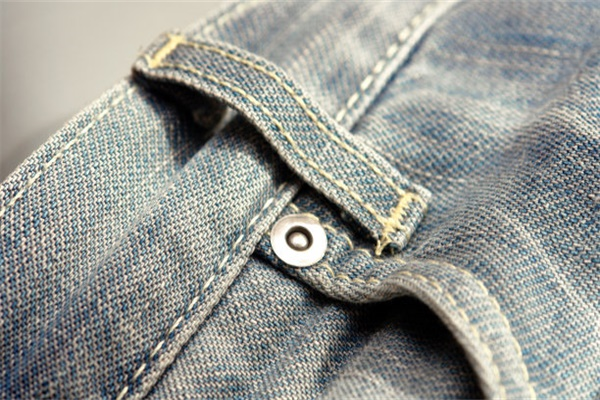Non-Toxic Dyed Jeans:Custom Colors Without Harmful Chemicals
Introduction
The fashion industry has long been criticized for its environmental impact, particularly in denim production. Traditional dyeing processes often involve toxic chemicals that harm ecosystems, workers, and even consumers. However, a growing movement toward sustainability has led to the development of nontoxic dyed jeans—offering vibrant, custom colors without the environmental and health hazards.

This article explores the harmful effects of conventional denim dyeing, the benefits of nontoxic alternatives, and how innovative brands are revolutionizing the industry with ecofriendly solutions.
The Problem with Conventional Denim Dyeing
1. Toxic Chemicals in Traditional Dyes
Most jeans are dyed with synthetic indigo, which requires hazardous chemicals such as formaldehyde, heavy metals (like cadmium and lead), and sulfur compounds. These substances can cause severe health issues, including skin irritation, respiratory problems, and even cancer for factory workers.
2. Water Pollution and Waste
Denim dyeing consumes vast amounts of water—up to 1,500 liters per pair of jeans. The wastewater, often untreated, contaminates rivers and groundwater with toxic residues, harming aquatic life and nearby communities.
3. Environmental Degradation
The chemicals used in conventional dyeing contribute to soil degradation and air pollution. Additionally, synthetic dyes are petroleumbased, further increasing the carbon footprint of denim production.
The Rise of NonToxic Dyeing Technologies
To address these issues, sustainable fashion brands and researchers have developed alternative dyeing methods that eliminate harmful chemicals while maintaining color vibrancy and durability.
1. PlantBased and Natural Dyes
Some companies now use organic indigo, derived from plants like Indigofera tinctoria, along with other natural pigments from fruits, roots, and leaves. These dyes are biodegradable and nontoxic, reducing environmental harm.
2. Waterless Dyeing Techniques
Innovative technologies, such as foam dyeing and CO₂ dyeing, significantly reduce water usage. Foam dyeing applies color using a foam medium, while CO₂ dyeing uses pressurized carbon dioxide to infuse dyes into fabric without water.
3. Bioengineered Dyes
Scientists are developing microbial dyes, where bacteria produce pigments through fermentation. These dyes are not only nontoxic but also offer unique, customizable colors with minimal environmental impact.
Benefits of NonToxic Dyed Jeans
1. Safer for Workers and Consumers
Eliminating toxic chemicals protects factory workers from health risks and ensures that consumers are not exposed to harmful residues in their clothing.
2. Reduced Water and Energy Consumption
Ecofriendly dyeing methods cut water usage by up to 90% and lower energy demands, making denim production more sustainable.
3. Customizable and Unique Colors
Nontoxic dyes allow for a broader range of custom colors without compromising safety. Brands can experiment with organic pigments to create exclusive, ecoconscious designs.
4. Biodegradability and Circular Fashion
Natural dyes break down more easily than synthetic ones, supporting a circular fashion model where jeans can be safely composted at the end of their lifecycle.
Leading Brands in NonToxic Denim
Several forwardthinking brands are pioneering nontoxic dyed jeans:
MUD Jeans: Uses organic cotton and recycled denim, with a leasing system to promote circular fashion.
Nudie Jeans: Focuses on organic materials and offers free repair services to extend garment life.
Outland Denim: Employs ecofriendly dyes and fairtrade labor to produce sustainable jeans.
DL1961: Utilizes watersaving dye technology and recycled fabrics for a lower environmental impact.
Challenges and Future Outlook
Despite the progress, nontoxic dyeing faces challenges:
Higher Production Costs: Sustainable dyes and technologies can be more expensive than conventional methods.
Limited Color Fastness: Some natural dyes may fade faster than synthetic ones, requiring further innovation.
Consumer Awareness: Many shoppers remain unaware of the benefits of nontoxic denim, necessitating better education and marketing.
However, as demand for sustainable fashion grows, advancements in ecofriendly dyeing will likely become more accessible and affordable.
Conclusion
Nontoxic dyed jeans represent a crucial step toward a cleaner, safer fashion industry. By embracing plantbased dyes, waterless techniques, and bioengineered pigments, brands can reduce pollution, protect workers, and offer consumers stylish, ecoconscious options.
As technology evolves and awareness spreads, nontoxic denim could become the new standard—proving that fashion can be both vibrant and sustainable. The future of jeans lies in colors that don’t just look good but also do good for the planet.
Would you switch to nontoxic dyed jeans? The choice is yours, but the impact is shared by all.
(Word count: ~1,200)
(Would you like any sections expanded or additional details included?)
Global logistics
It can be shipped worldwide
About the MOQ
Minimum order quantity of 200 pieces
Support 24/7
Call us:(+86)138 0277 1794
Free sample
200 pieces MOQ Free sample

Customized product message